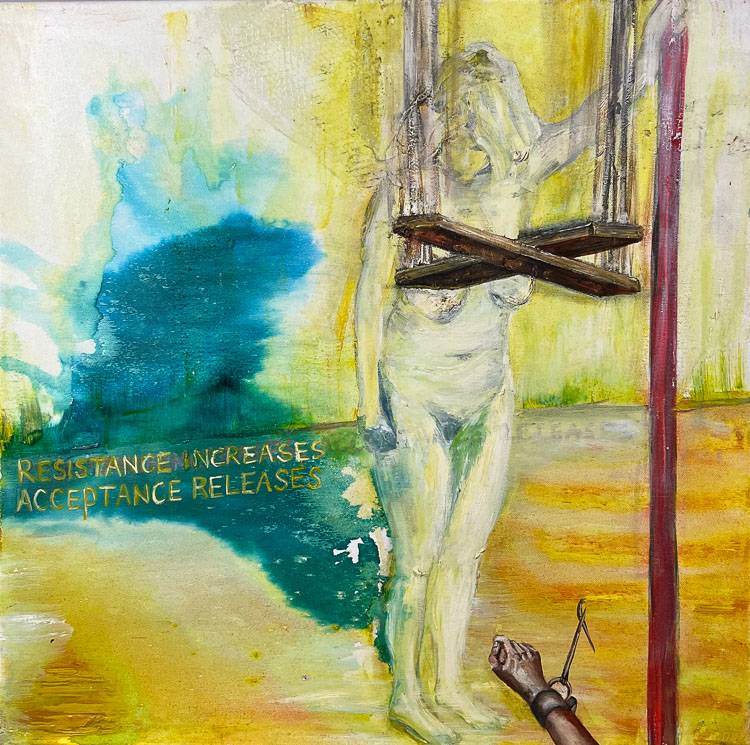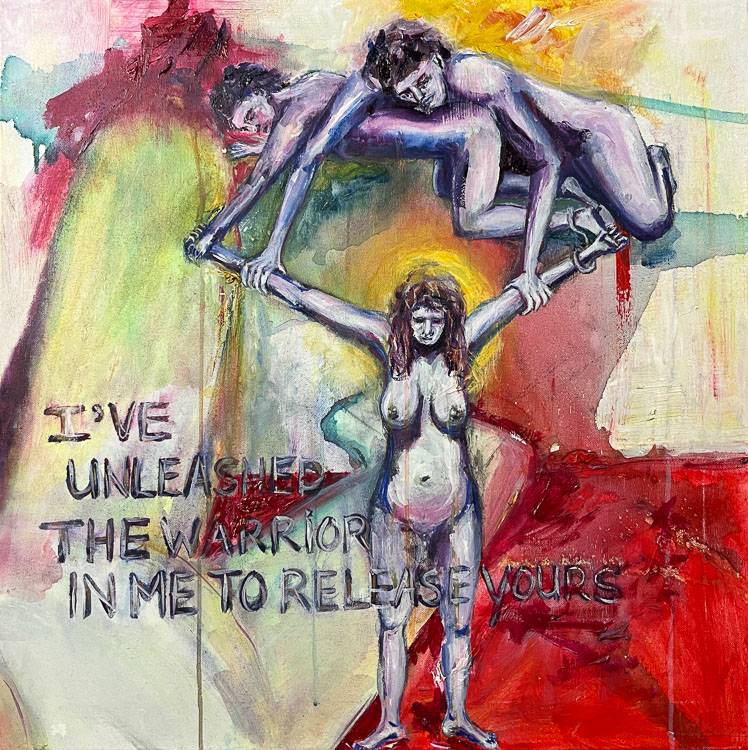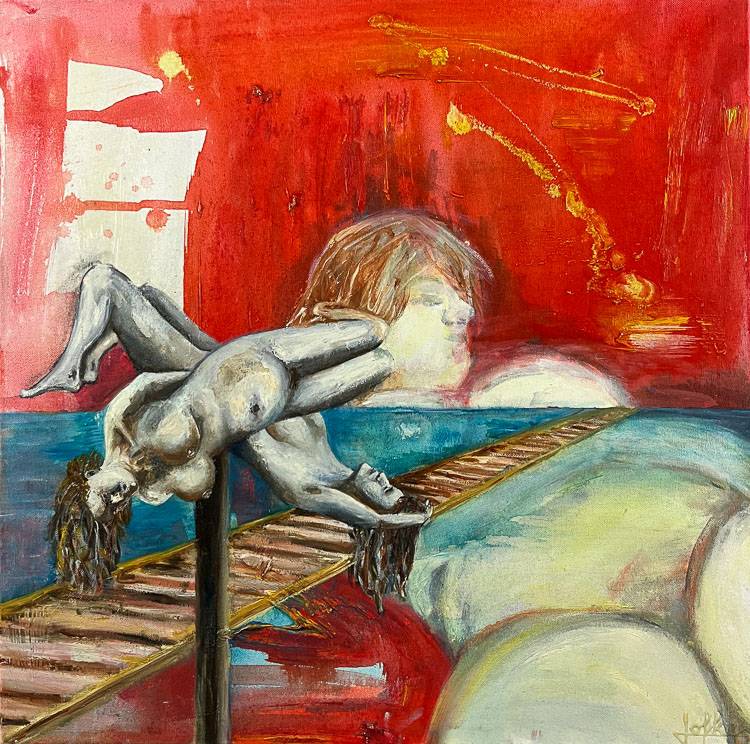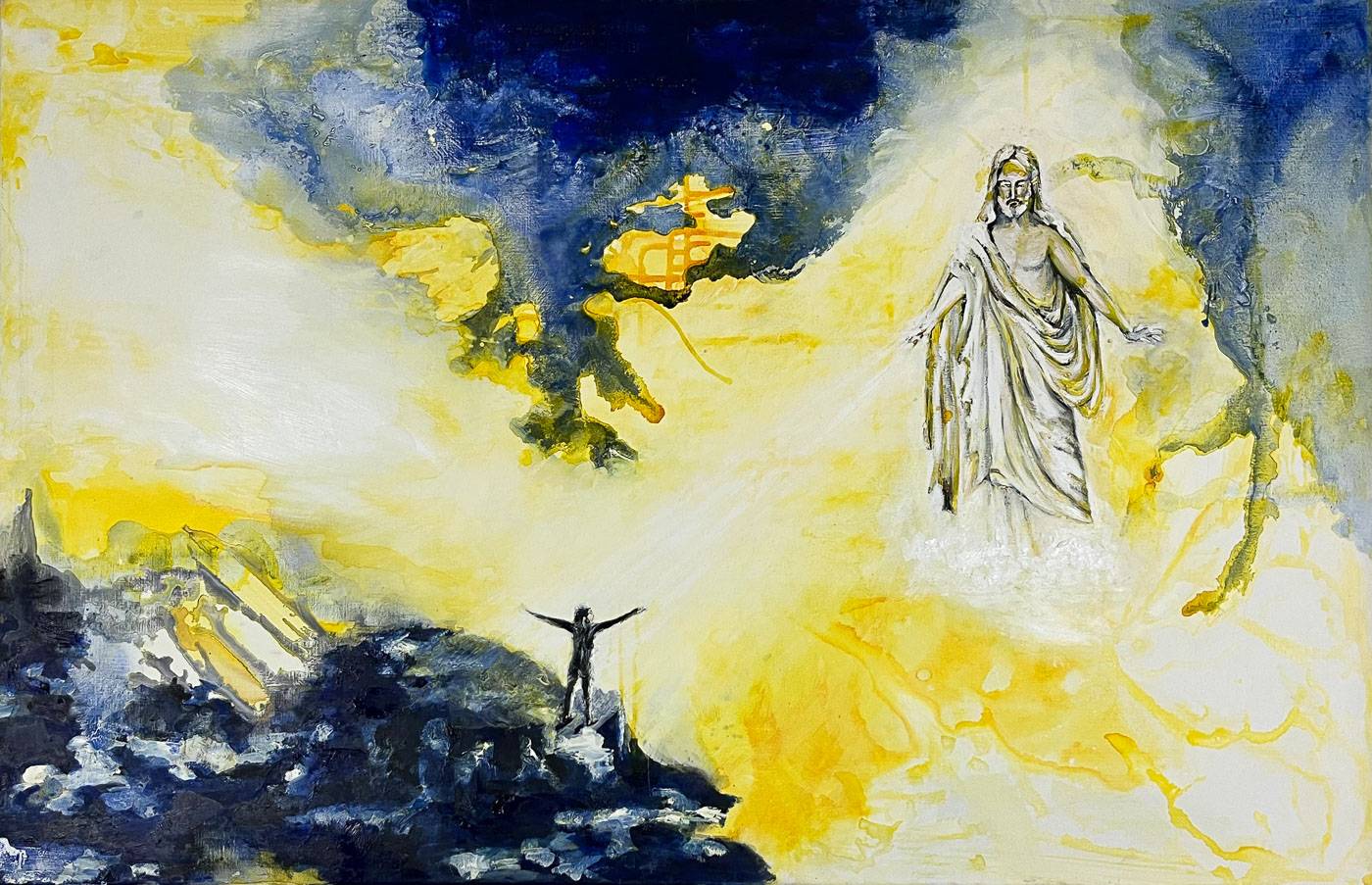My passion
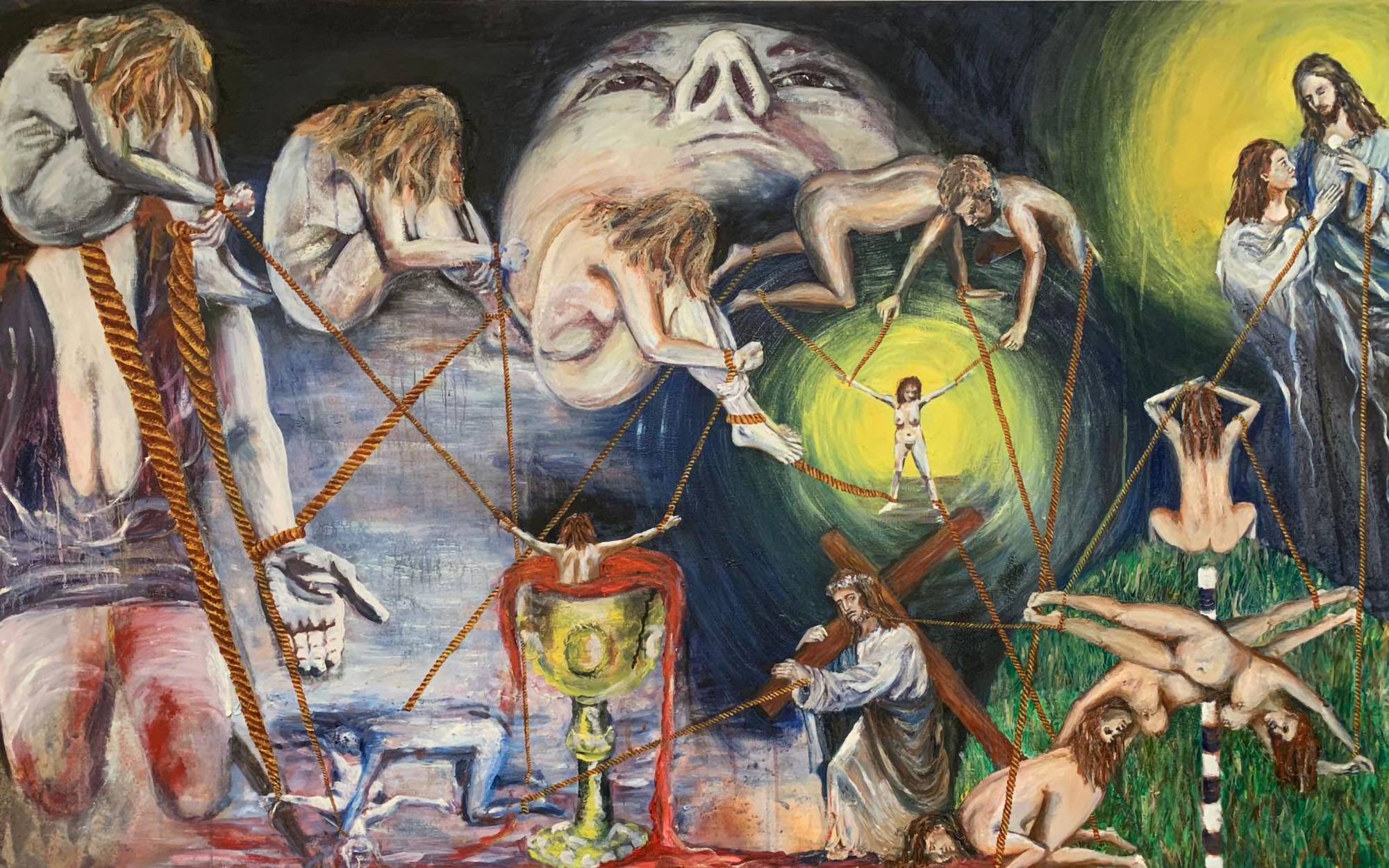
Walk with me through my Way of the Cross….
Spread across a linen canvas 100 cm high by 160 cm wide, 17 human figures are painted in oil paint. The background is predominantly dark blue. As a result, the painting initially looks heavy. Together with the confrontational elements in the work, this refers to the dark side or resistance within ourselves. There are also symbolic references to enlightening aspects in the painting. Because of this, the entire painting refers to the first station, which is about accepting our fate.
Read more
Above the third woman, about the center of the painting, a large face looks upward. The view of this face is from below. The face could refer to the Divine present in everything. We could confidently resign ourselves to this universal power and trust our intuition which is part of this. After all, we do not know what awaits us and can only act in good conscience in confidence that then all is well. This is what stations 10 is about.
In the lower right corner of the large face, two figures sit crouched next to each other. One is hiding behind the other, who is holding two ropes to which a woman is tied at her wrists. That female figure is depicted among these men as a Christa, female servant of Christ. The two figures firmly hold this woman figure who can therefore do nothing but let go of control. A slogan I coined in an earlier study on this subject is “I’m releasing the warrior in me to release yours”. This is what I think the fifth station is about. Behind the woman shines a large light that refers to the relief you experience when you release control.
In the upper right corner are a Jesus figure giving communion to a woman the holds up her hands in prayer pose. Behind these two figures shines bright yellow light. Like two aureoles merging into each other. The humble pose of the woman in relation to the Christ figure refers to the humility written about in station 12.
I have now described the top half of the painting and now move back to the left. The first of the three huddled woman figures is depicted in front of the head of a large painted woman figure with deep cleavage. You could also see it as that the woman figure on the upper left is in the head of the large woman. This large depicted woman figure extends her arm with an open hand. An open hand with the palm facing up means: I pose no threat. It is reminiscent of the submissive hand of a beggar on the street, and in fact it means the same thing. The partially bare bosom refers to glorification which is what the third station is about. Pride and greed can cause us to act at the expense of others. If you look closely, there appears to be an eye in the large open hand.
The hand points to two vaguely painted figures. One of the figures is on its knees, bending over the other figure who is lying on its back on the ground. The figure is bound by wrists, ankles and neck and therefore powerless. This refers to the abuse of power and oppression written about in the eighth station. The figures are not immediately visible at first glance. This refers to from the sinking of Judas after he betrayed Jesus in the second station.
On the Mount of Olives, Jesus says to God, ‘I will drink your cup and thereby accept my fate. Your will shall be done’. To the right of the open hand and the two figures described above is a large golden-yellow cup from which a red liquid flows. That liquid may refer to the blood of Jesus. The cup of wine that we share symbolizes the blood of the New Covenant that was poured out for us for the forgiveness of sins. The 13th station is about redemption. About a new beginning after suffering thanks to forgiveness, surrender and love.
In the cup is a long-haired figure with arms spread out to the side. This figure rises above the cup from mid-back. The rest of the body is not visible because it disappears into the full cup. Because the figure is depicted from behind, it is not clear whether it is a man or a woman. The wrists are tied to wrists of the three figures representing the denial of Station 3. The figure in the cup depicted with its back refers to the scourging of Jesus. His martyrdom and thus sacrifice for a greater cause. This is what station 6 is about.
To the right of the cup and below the woman before the light of the fifth station, Jesus is painted carrying his cross. You could say he is bearing his responsibility as well as that for all humanity. I depicted this theme again by having two female figures form an Andreas cross together. They form the St. Andrew’s Cross like a road sign standing in front of a railroad. The two figures thus bear responsibility together. Above them sits a figure with her back turned to us and hands on top of her head. That figure is bound with her wrists to the ankles of the women forming the St. Andrew’s Cross. All three of these figures are also bound to the painted Jesus figures. The longer you look at the painting, the more you are led from one figure to another via ropes. This symbolizes that everything is connected. Everything we do has a consequence on our environment. What we do to another, we also do to ourselves. What we do to ourselves, we do to another. This holistic connectedness is what station nine is about. The St. Andrew’s Cross symbolizes divine power. The letter X, also called Chi, represents the spiritual energy that is part of all that exists.
Station seven is about bearing responsibility. Jesus reveals that this is not an option. This means that we must be willing to relinquish our own will and ambitions when doing so serves a higher purpose.
